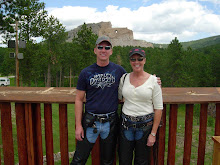I'll get a bit more organized with my book reviews/recommendations from here on. The new scale, using the sliding die size scale familiar to Piquet players:
D4: I can't recommend this book. Save your money for gasoline, figures, or another book. I won't save space on my shelf for this turkey.
D6: Some redeeming qualities. Questionable facts or conclusions. A difficult read. I'll keep it, but will probably only use it for a research resource.
D8: A solid recommendation. Not the best, not the worst. I learned something I didn't know before. Something just wasn't there that kept it from getting a higher rating - maybe bad maps, bad editing....just something that held it down. This book could be recommended for those interested in the specific topic.
D10: A really enjoyable book. Good writing, interesting topic. Good feel and appearance. Nice maps, etc. A definite recommendation, even outside of a period you might normally be interested in.
D12: WOW! Great writing, an easy read. Inspirational - I can see the games this will lead to. Where is that figure catalog? A recommendation without reservation. I'll read this again and again.
So - on to the first reviews!
"Inside the Nazi War Machine" by Bevin Alexander. ($26.95)
An odd title...just short of "Hitler's Mighty Army" or some such drivel. I almost didn't pick this up at the bookstore because of the title. I'm glad I did though - its about the France 1940 campaign, and the contributions to the German victory by Manstein, Guderian, and Rommel. Alexander's writing style can sometimes be a bit stilted, but it is a pretty quick read. With few books covering this period, it serves its purpose as an introduction. Not detailed at the tactical level, but there's enough meat there to come up with some scenarios. Rather than being inspirational, I found the campaign to be depressing to me. Only the French army of 1940 could make the Army of the Potomac in 1861/62 look well led! I had been contemplating doing France 1940 with 25mm, but now I don't think I will. I'm not sure that the campaign holds much tactical interest for me.
Rating: D8
"Exodus from the Alamo" by Phillip Thomas Tucker ($32.95)
This book has elicited some pretty heated opinions. Tucker spends a good chunk of the book (maybe 25%?) discussing slavery and the possibility of economic gain as the reason for expansion into Texas. OK, OK, I get it already. Early on in the book I felt like I was getting hit over the head again and again with a pretty heavy handed message. However, I'm glad I stuck it out. About midway through the book, the study turned to the "siege" and then assault of the Alamo. Tucker makes some quite interesting statements and conclusions about the "battle" - or almost total lack of - in the final assault. His discussion of the action outside of the Alamo's walls are particularly interesting. While some have said that this is nothing new, I haven't seen it explored in this depth, or with such conviction.
Rating: D10
Subscribe to:
Post Comments (Atom)

I know how you feel about the 1940 campaign but it is similar to the Franco Prussian war. In fact they both lasted about the same amount of time and both had a lot of the same flaws in French command.
ReplyDeleteFor a better read, you might try Ernest May, "Strange Victory" or Powaski's "Lightening War", or Jackson "The Fall of France". Also see Benoist-Mechin's "Sixty Days That Shook the West" will give you a 1960s French interpretation of the campaign. I really enjoyed Jackson's book. He also has a follow up book on France from 1940 to 1944 but I can't remember the title.
The argument in favor of gaming the early war, at least on a tactical level, comes from the fact that everything was still experimental. A lot of concepts on both sides were simply bad ideas - motorcycle battalions?, tanks with one man turrets?, 25mm and 37mm AT guns? Painting the turrets on the platoon commander's tank with a different color so that it could be identified by the rest of the platoon (what about the enemy?). It makes for much more challenging games.
Some things foreshadowed late war. De Gaul's scratch 4th Armored division, with little infantry and no engineers or artillery, looked a lot like the late war German Panzer brigades that fought the Americans in 1944.
Greg
I don't know....I'm intrigued, but not sold! Maybe its the books I've read, but it just gets frustrating reading aboout French command incompetence. I suppose my opinion might change if I put figures on a table and see a game in action. I'm working on some variant games of FoBWW2 that might get me into it. I haven't seen Jackson's book - I'll look into it. I need some more books.
ReplyDeleteDone! Jackson's book (and a couple of other goodies from Amazon) is ordered.
ReplyDeleteLook forward to your thoughts on Jackson's book.
ReplyDeleteGreg.